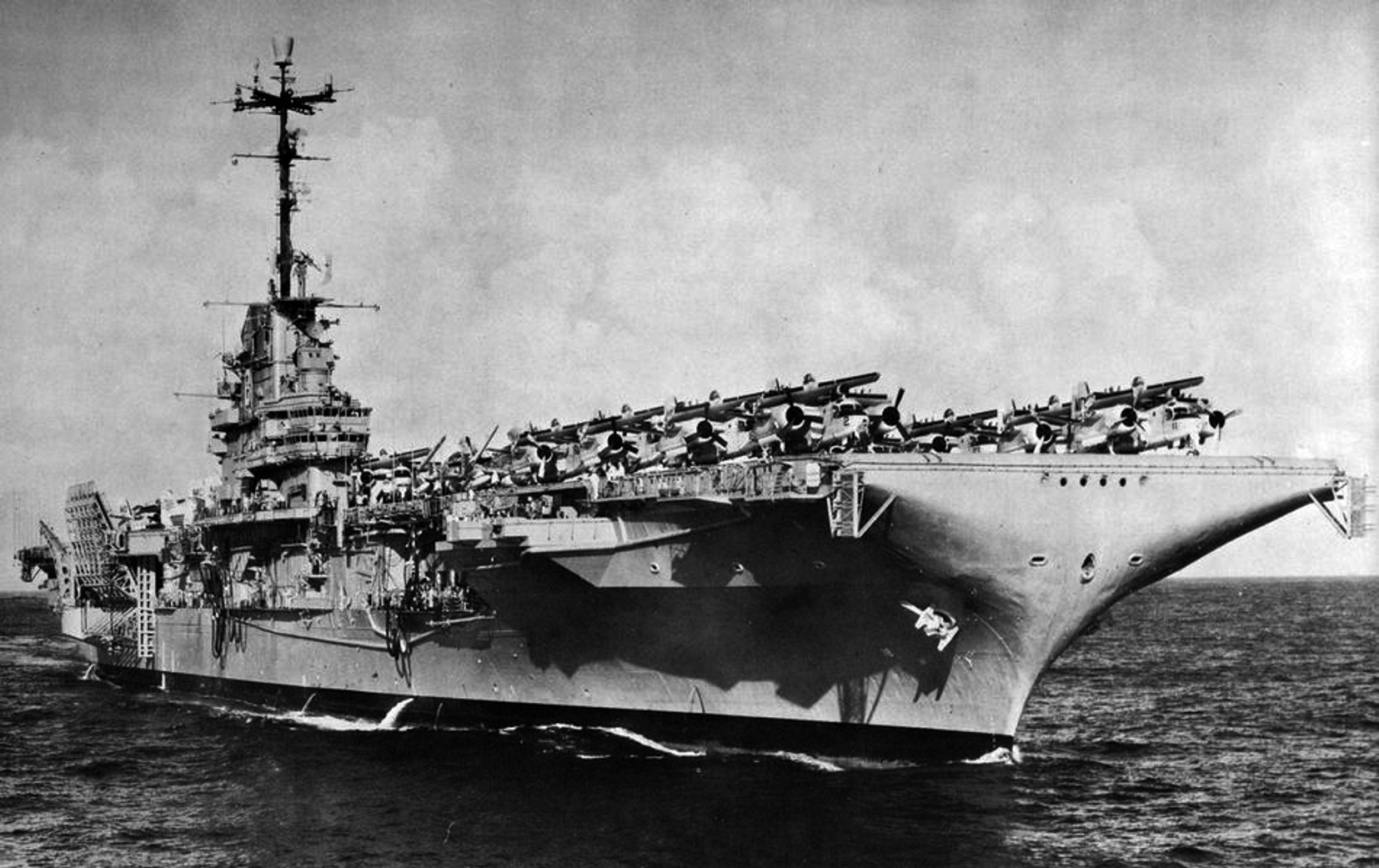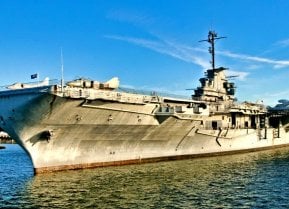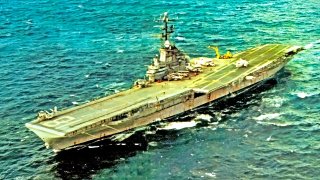USS Wasp: Why This U.S. Navy Aircraft Carrier Was So Important
Beyond her illustrious military career, the USS Wasp (CV-18) played a significant role in the manned space program, and she served as the recovery vessel for five Project Gemini missions beginning with Gemini IV, the mission that saw the first space walk by an American, astronaut Ed White.
USS Wasp – The Warship That Played a Significant Role in the Space Program - For her service in the Second World War, the United States Navy's Essex-class aircraft carrier USS Wasp (CV-18) earned eight Battle Stars, along with two Navy Unit Commendations, two National Defense Service Medals, and the Navy Meritorious Unit Commendation among many other awards.
Originally to be named USS Oriskany, she was instead named to honor the USS Wasp (CV-7) that was lost in September 1942 in the southwestern Pacific while supporting forces on Guadalcanal. She was the ninth vessel named for the flying insect and was one of the 24 Essex-class aircraft carriers built for the U.S. Navy.
USS Wasp CV-18: A Fighting Carrier
Her combat record saw her enter service in the spring of 1944, and she took part in the Mariana and Palau Islands campaign, followed by the Battle of the Philippine Sea in June of that year, and then in October 1944's Battle of Leyte Gulf.
During the Battle of Iwo Jima, the carrier found herself under almost continuous attack by shore-based aircraft and experienced several close kamikaze attacks. CVN-18's gunners fired more than 10,000 rounds at the determined Japanese attackers, but on March 19, 1945, she was hit with a 500-pound armor-piercing bomb that penetrated the flight deck as well as the armor-plated hanger deck.
The bomb exploded in the crew's galley, killing about 102 who had been at breakfast after being at general quarters all night. Despite the losses and the damage the warship took, USS Wasp continued operations with her Task Group. In fact, the air group was able to carry out flight operations just a half hour after the bomb hit!
Post-War Refit
After the Second World War, the Essex-class aircraft carrier was among the U.S. Navy vessels to be placed in the Atlantic Reserve Fleet before heading to the New York Naval Shipyard for refitting and modifications that allowed her to accommodate larger, heavier, and faster aircraft of the jet age.
She was recommissioned in September 1951 but suffered through a mishap – colliding with the destroyer minesweeping USS Hobson (DMS-26) while conducting night flying operations en route to Gibraltar in April 1952.
Though she suffered no personnel casualties, 176 of the crew of the USS Hobson, including her commanding officer were lost. The USS Wasp also sustained significant damage to her bow and was forced to proceed to Bayonne, New Jersey for repairs.
The aircraft carrier USS Hornet (CV-12) was undergoing her own conversion, and that flattop's bow was removed and floated by barge from Brooklyn, New York, and fitted into position on the USS Wasp in just 10 days!
The World War II-era carrier was among the U.S. Navy warships to play an active participation in the Cuban blockade in November 1962.
The Gemini Program and USS Wasp
Beyond her illustrious military career, the USS Wasp played a significant role in the manned space program, and she served as the recovery vessel for five Project Gemini missions beginning with Gemini IV, the mission that saw the first space walk by an American, astronaut Ed White. Operating along the Eastern Seaboard, USS Wasp successfully recovered the Gemini IV astronauts James McDivitt and White and their spacecraft on June 7, 1965, after splashdown.
In December of that same year, the carrier recovered the astronauts of Gemini VI-A, Wally Schirra and Thomas P. Stafford, and its sister craft, Gemini VII, Frank Borman, and Jim Lovell—the participants involved in the first-ever manned space rendezvous—after their respective splashdowns.
Following maintenance in Boston, the aircraft carrier further participated in the Gemini XII recovery operation in November 1966, with the recovery taking place on November 15, 1966, when the space capsule splashed down within 3 mi (5 km) of the USS Wasp.
Captain James A. Lovell and Major Edwin E. "Buzz" Aldrin were lifted by helicopter hoist to the deck of the carrier.
End of the Line for the Wasp
In the spring of 1969, the carrier took part in the joint Exercise "Trilant" which was held with the navies of the United States, Spain, and Portugal. During that deployment, USS Wasp also arrived at Portsmouth, England, and served as flagship for TF 87, representing the United States in a NATO review by Queen Elizabeth and Prince Phillip in which 64 ships from the 11 NATO countries participated.

Just three years later, in March 1972, it was announced that Wasp would be decommissioned and stricken from the Navy list. Decommissioning ceremonies were held on July 1, 1972. The Essex-class aircraft carrier was subsequently sold in May 1973 to the Union Minerals and Alloys Corp., of New York City, and scrapped.
It was an inglorious end to a career for a warship that played such a significant role in wartime and then with the peacetime space program.
Author Experience and Expertise
Peter Suciu is a Michigan-based writer. He has contributed to more than four dozen magazines, newspapers, and websites with over 3,200 published pieces over a twenty-year career in journalism. He regularly writes about military hardware, firearms history, cybersecurity, politics, and international affairs. Peter is also a Contributing Writer for Forbes and Clearance Jobs. You can follow him on Twitter: @PeterSuciu.


